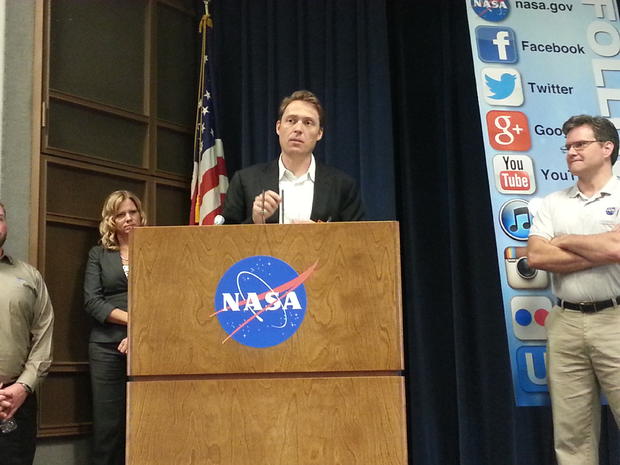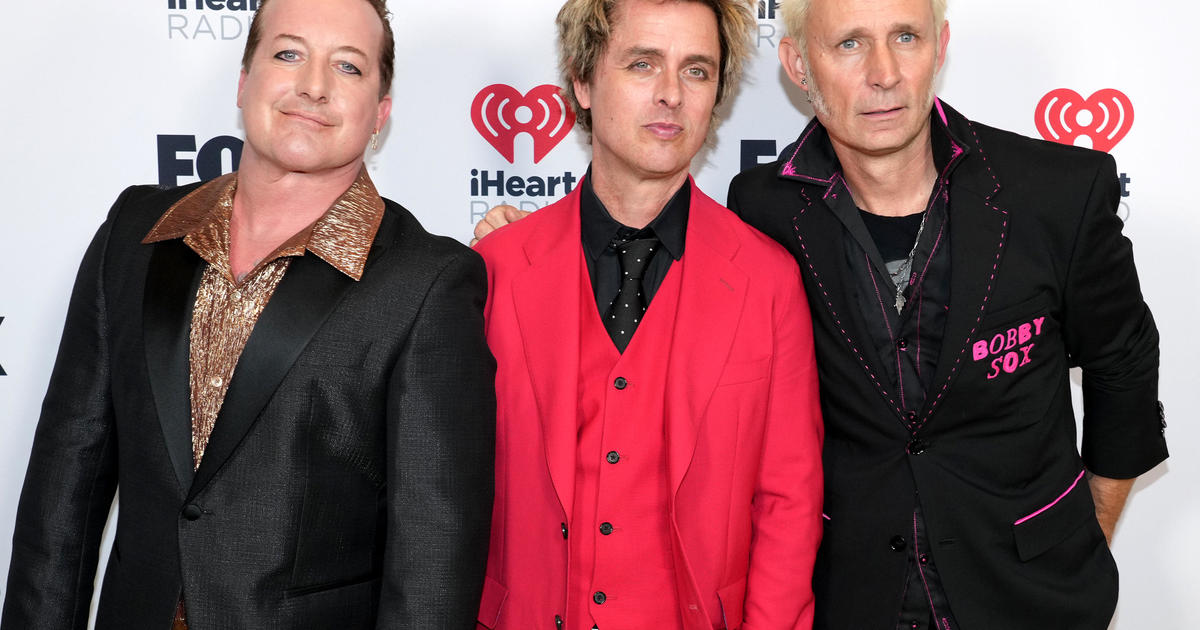NASA-Developed Electric Propulsion Tech To Increase Aviation Energy Efficiency By 500 Percent
Matt Kamlet, CBS Los Angeles
EDWARDS, CA (CBSLA.com) — "I would like to propose to you that electric-propulsion will change aviation far more radically than anything we've seen in aviation before."
Standing in the dusty, unforgiving dryness of the Rogers Lake Bed at Edwards Air Force Base near Palmdale, JoeBen Bevirt, founder of Joby Aviation, looked on amidst 25-knot winds and watched a tremendous step of the realization of his dream of 20 years soar by.
"Currently, you go to the airport to fly — if you're a frequent traveler, a few times a month, or if you're not so frequent a traveler, a few times a year — I'm talking about aviation becoming something where you're flying every day or multiple times per week," Bevirt said. "That's what electric propulsion does."
Bevirt was speaking of the Leading Edge Asynchronous Propeller Technology (LEAPTech) project — an initiative which may herald in a new age of aviation where aircraft are powered through electric motors.
In this potential "new age of aviation", aircraft would be far less reliant on fossil fuels, while improving performance and greatly reducing noise.
Bevirt says he also expects LEAPTech will make aviation as regular to the public within years as automobiles became in the early 20th century.
"In the next 20 years we're going to see aircraft become as relevant to you as automobiles became to people in the 1920s" Bevirt stated, "So we're going to see a massive seat change in how people move and travel."
NASA, likewise, partnered with Joby Aviation, based in Santa Cruz, as well as Empirical Systems Aerospace (ESAero), is equally as excited about what low-carbon aviation may lead to in the years ahead.
"This is just the beginning of the future for low-carbon propulsion," AFRC Associate Director Dennis Hines said. "This is a really exciting area right now, (as) it is growing, and we are learning a lot... this is a brand new area for NASA and really the United States for investing in this research area and I hope that you will see where the future is going to go, and how NASA going to help us get there."
Researchers from NASA's Armstrong Flight Research Center, located at Edwards, about 40 minutes north of Los Angeles, have spent months testing the technology through a specially-designed wing, fitted with 18 electric motors, and installed atop a modified rig.
As Mark Moore of NASA's Langley Research Center explains, the Hybrid-Electric Integrated Systems Testbed (HEIST) is fitted with 18 electric motors, each rotating the opposite direction from the one next to it to create tighter propulsion in the airframe.
"Each one of those little propellers is able to energize the flow, increase the dynamic pressure, and make a much more capable performing wing," Moore said. "This (is a) 31-foot-span wing, with 18 small, compact, highly-reliable, quiet electric motors integrated with propulsors across the leading edge. It's a brand-new way of being able to achieve a tight coupling of aerodynamics and propulsion to achieve fantastic new capabilities."
In the lake bed, the 30,000-lb tractor/trailer rig drives at speeds between 40-70 miles per hour, allowing researchers to collect data necessary to observe and compare the electric propulsion to its older, more traditional predecessor.
Within two-to-three years, JOBY Aviation expects to be testing LEAPTech in the air, via a piloted X-plane — specifically, an Italian Tecnam P2006T, with the engines and wings replaced using electronic propulsion technology.
Using an already-flown aircraft will benefit research by allowing the data from the electronic-powered airframe to be compared to the original airframe's statistics.
NASA invited social media users out to Edwards Air Force Base on Tuesday to witness the HEIST technology first-hand in a demonstration. Standing 500 feet away from the demonstration path, every guest who stood in the dry lake bed that afternoon agreed that any traditional aircraft flying by that close would create quite a ruckus of sound.
On Tuesday, however, the only sound to be heard as HEIST passed by was the wind, blowing dust through the lake bed.
If you've ever heard — or only seen — an electric car drive by in your direct vicinity, you get the idea.
For a first-hand comparison of just how dramatic the difference is, watch this clip comparing a Cirrus SR22 aircraft, flying over at 500 feet, and what the LEAPTech modified P2006T will sound like at the same height, and under the same horsepower:
The big picture, according to Moore, is realizing the benefits of electric propulsion economically, environmentally and technologically.
"The big benefits that we're chasing with this new type of vehicle is this primary of objective of being able to decrease the amount of energy at the high-speed cruise by a factor of five times," Moore described. "That's not five percent. That's not fifty percent. It's five hundred percent."
Achieving that unprecedented 500% reduction in energy will simultaneously produce a snowball result of a 30% decrease of the total operating cost, as well as an exceptional 0% emission.
In the end, as one stands in the dry bareness of the Rogers Dry Lake Bed, the reminder of the state of the environment, and the continued punishment of the state of California's historic drought, becomes as difficult to ignore as the desire to do something about it. While the potential economic impact and benefit of electronic propulsion on the aviation industry is clear, and the exciting technological advances and vivid dreams of where aviation is going begin to paint a colorful picture, the immediate value of LEAPTech, as far as NASA is concerned, is clear.
As ever, the initiative to study our planet, be it through the Orbiting Carbon Observatory satellite, or the Soil Moisture Active Passive observatory, or through cleaner methods of aviation yet to become a full reality, begins with something folks at NASA are rather familiar with — a dream, a development, and an undying yearning to pursue what's next.
When this environmental initiative merges with the economic incentive of an entire industry, the result may be revolutionary.
"What's so exciting about this, is that we have an opportunity to create a path in aviation to incentivize low-carbon emissions...so one of the things I'm most excited about, is incentivizing green technologies, so that it's not an obstruction or obstacle for an industry to absorb it, but that they want to do it, for their own profit margins."




